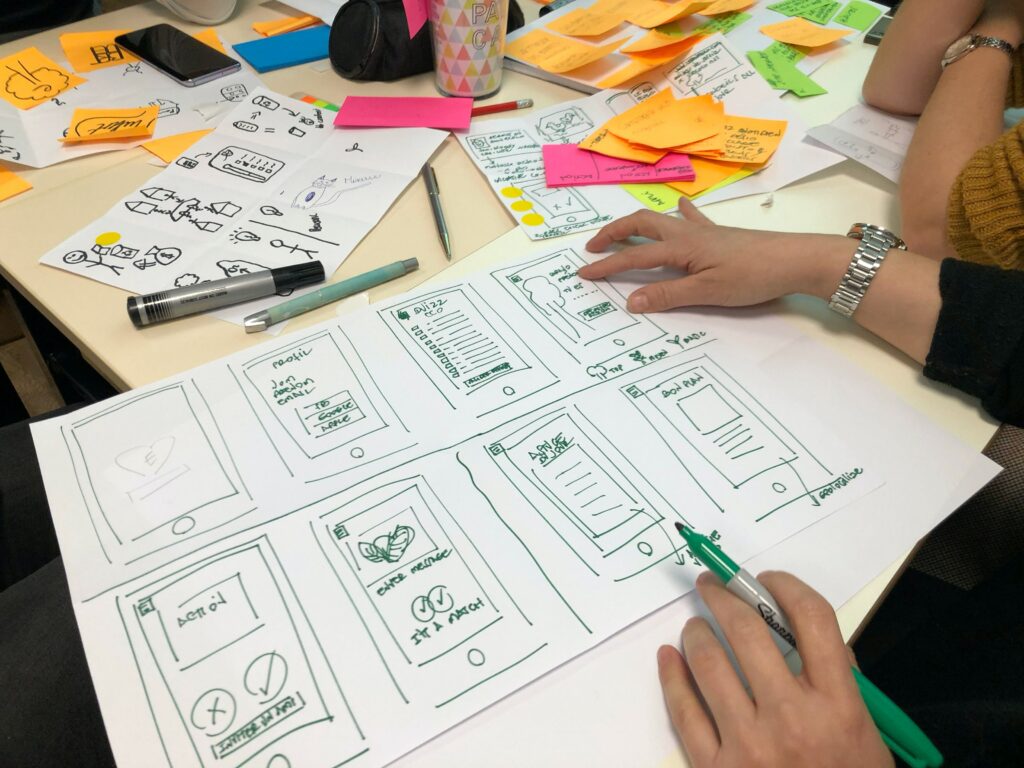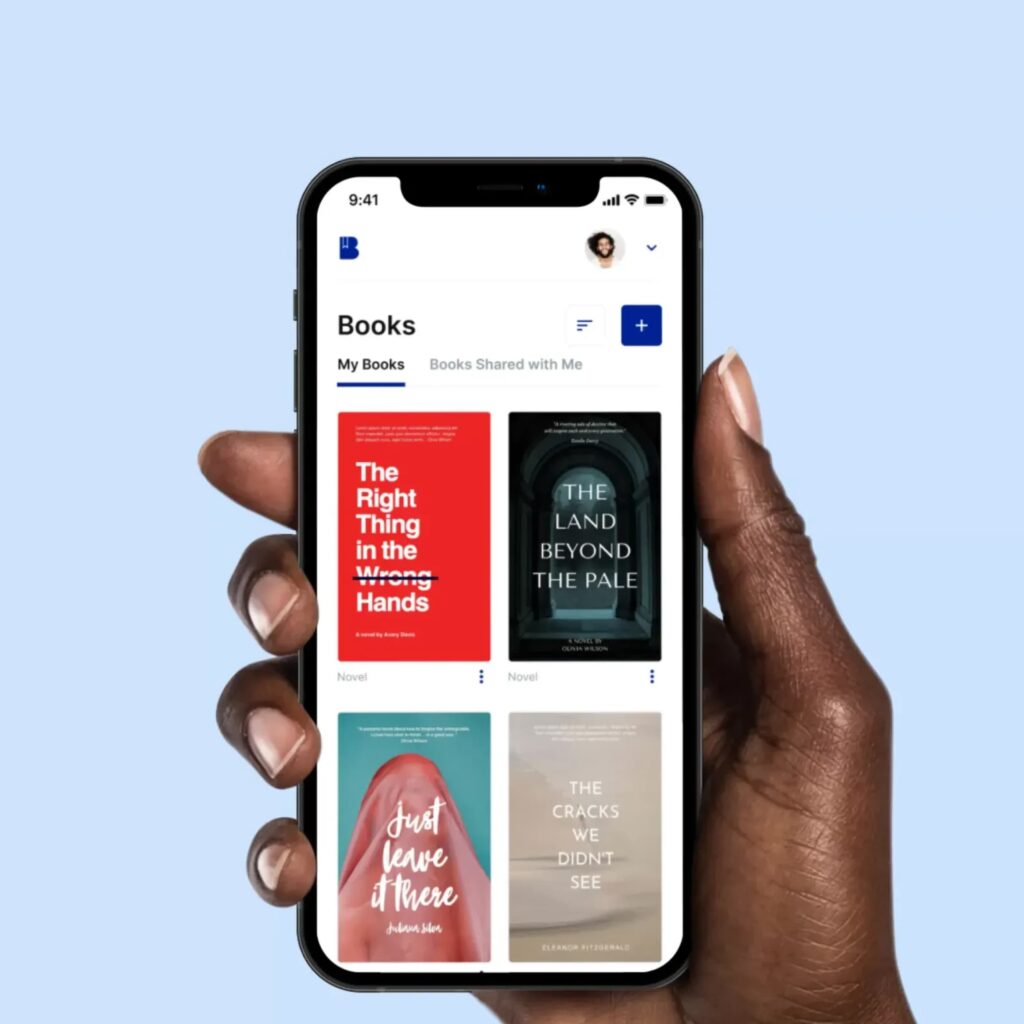Blog
Why You Should Build an MVP

I. Introduction
The concept of the Minimum Viable Product (MVP) has gained significant prominence in the fast-paced digitization that is quickly transforming businesses today. It serves as a critical tool that allows businesses to validate their ideas, minimize costs, and mitigate risks. This article aims to explore the reasons to build an MVP and shed light on why it has become an essential approach for founders and businesses in the software development industry.
A well-planned MVP is a game-changer, it holds immense significance in the product development process, offering numerous benefits to businesses. Embracing this approach helps companies make informed decisions, improve market fit, and increase the chances of success for their software products.
The Lean Startup methodology, popularized by Eric Ries, focuses on building products in a lean and agile manner, optimizing resources, and maximizing learning.
At the core of this methodology lies the MVP, which can be defined as a version of a product with enough features to be usable by early adopters. It aims to deliver value to customers while minimizing the time and effort required for development.
II. The Concept of the Minimum Viable Product
A. Core idea behind the MVP
At its core, the Minimum Viable Product (MVP) embodies the concept of developing a product with the bare minimum features required to address a specific problem or deliver value to early adopters.
The primary goal is to validate assumptions, gather user feedback, and learn as fast as possible while minimizing resources and time invested.
The MVP approach enables founders to test the viability of their product idea and make informed decisions based on real-world data and user insights.
🎙️ Podcast – Maintaining Innovation by Staying Small until Product-Market fit
B. Characteristics of a successful MVP
To ensure the success of an MVP, there are a few characteristics that should be taken into consideration:
- Focus on Core Functionality: A successful MVP hones in on the core functionality that directly addresses the target users’ needs or pain points. Prioritizing essential features helps founders deliver a functional product quickly and efficiently.
- Usability for Early Adopters: An MVP should be usable and valuable to early adopters. It should provide a tangible benefit or solve a problem, enticing users to engage with the product and then provide valuable feedback.
- Scalability and Adaptability: While an MVP is a scaled-down version of the final product, it should have the potential to evolve and accommodate future features and enhancements. Scalability and adaptability enable founders to build upon the initial product based on user feedback and changing market demands.
- Data-Driven Approach: A successful MVP relies on gathering meaningful data and user insights. It should help you collect valuable information to inform their decisions and drive iterative improvements. When working with MVP development companies, these characteristics are often emphasized to ensure the final product meets market needs effectively.
C. Differentiating an MVP from a full-fledged product
It is crucial to understand the distinction between an MVP and a full-fledged product:
- Scope: An MVP focuses on the core functionality and the most critical features, while a full-fledged product encompasses a broader range of features and capabilities.
- Time and Resources: An MVP is developed and launched within a shorter timeframe, allowing founders to validate their product assumptions quickly and efficiently. In contrast, a full-fledged product requires more time and resources for development, testing, and refinement.
- User Feedback: The primary purpose of an MVP is to gather user feedback and iterate based on real-world insights. A full-fledged product, on the other hand, undergoes extensive development and refinement before receiving substantial user feedback.
- Market Entry: An MVP is introduced to the market early on to validate its market fit and gather initial traction. In contrast, a full-fledged product is launched when it has undergone thorough development, testing, and refinement.
By differentiating an MVP from a full-fledged product, founders can adopt a more iterative and lean approach to product development, mitigating risks and optimizing resource allocation.
In the next section, we will explore the advantages of building an MVP, providing founders with a comprehensive understanding of the value it brings to their software product development journey.
III. Advantages of Building an MVP
Let’s break down some of the advantages, giving three reasons why and how an MVP helps in each.

A. Validating the Market Need
Building an MVP offers several advantages, including the ability to validate the market need for a product. Here’s how an MVP helps in this process:
- Conducting Market Research: Market research involves studying industry trends, analyzing competitor offerings, and understanding customer preferences. All this information helps businesses make informed decisions about their product, and ensure it aligns with market demands.
- Identifying Target Audience and Pain Points: An MVP allows businesses to identify their target audience and their specific pain points. Through user feedback and observation, businesses can gain insights into the needs and challenges faced by their potential customers. This knowledge helps tailor the product to effectively address those pain points, ensuring that it meets the demands of the market.
- Testing Product-Market Fit: An MVP acts as a testing ground to assess product-market fit. This simplified version of the product that is released to early adopters, helps businesses evaluate its acceptance and viability in the market. User feedback and engagement during this stage also provide valuable insights for refining the product and aligning it with the needs of the target market.
Validating the market need helps minimize the risk of investing resources in a product that may not resonate with the target audience and increases the chances of success for the full-fledged product.
B. Minimizing Development Costs and Time
Building an MVP offers significant advantages in terms of minimizing development costs and time. Here’s how an MVP accomplishes this:
- Focusing on Essential Features Only: By building an MVP, businesses can prioritize and focus on developing the essential features of their product. This approach helps avoid the unnecessary complexity and development of features that may not be crucial at the initial stage. By streamlining the development process and concentrating efforts on core functionalities, businesses can save both time and resources.
- Reducing Unnecessary Development Efforts: An MVP enables businesses to minimize unnecessary development efforts by targeting the most critical aspects of their product. The key here is avoiding over-engineering and excessive customization, this helps maintain a lean development process. This not only saves time but also reduces the associated costs of development, testing, and maintenance.
- Rapid Prototyping and Iteration: Through rapid prototyping and iterative development cycles, an MVP allows businesses to quickly test and refine their product. Instead of investing extensive time and resources into building a fully polished product, businesses can create a functional prototype that demonstrates the core value proposition. This iterative approach enables continuous improvement based on user feedback, resulting in a more refined product in subsequent iterations.
C. Mitigating Risks and Uncertainty
Building an MVP provides businesses with advantages in mitigating risks and reducing uncertainty. Here’s how an MVP helps achieve this:
- Identifying Potential Risks and Challenges Early On: An MVP allows businesses to identify potential risks and challenges associated with their product or market early in the development process. This early identification helps businesses address these risks and make necessary adjustments before investing significant resources into a full-fledged product.
- Gathering User Feedback and Adapting the Product: An MVP serves as a valuable tool for gathering user feedback and insights. Engaging with early adopters gives businesses the priceless opportunity to collect firsthand information on user preferences, pain points, and suggestions for improvement. This feedback-driven approach enables businesses to enhance their market fit and reduce the risk of building a product that fails to resonate with the target audience.
- Making Informed Decisions Based on Real Data: An MVP empowers businesses to make data-driven decisions by collecting and analyzing real-world user data. Instead of relying on assumptions or speculation, businesses can obtain concrete insights into user behavior, usage patterns, and preferences.
D. Gaining Early User Feedback and Engagement
Building an MVP offers the advantage of gaining early user feedback and fostering engagement. How does an MVP facilitate this?
- Building a Community of Early Adopters: An MVP allows businesses to attract and engage with early adopters, who are often enthusiastic and willing to provide feedback. You can then build a community of users who are invested in the product’s success. This community becomes a valuable source of feedback, insights, and word-of-mouth promotion.
- Collecting Valuable User Insights for Product Improvement: Through user feedback, businesses can gain a deeper understanding of user preferences, pain points, and areas for improvement. This user-centric approach helps drive product enhancements, ensuring that subsequent iterations address the specific needs and expectations of the target audience.
- Enhancing User Satisfaction and Retention: Users appreciate when their feedback is considered and implemented, fostering a sense of ownership and loyalty towards the product. This engagement leads to higher user satisfaction, increased product usage, and improved customer retention.
E. Attracting Investors and Stakeholders
An MVP is key to attracting investors and stakeholders. How does it do that?
- Demonstrating Proof of Concept and Market Demand: An MVP serves as a tangible demonstration of a product’s viability and market demand. This tangible evidence helps validate the business idea, increasing confidence in its potential success.
- Generating Traction and User Acquisition Metrics: Through an MVP, businesses can generate traction and gather user acquisition metrics. These metrics, such as user sign-ups, engagement rates, and conversion rates, provide concrete data on the product’s market appeal and growth potential.
- Enhancing Credibility and Increasing Funding Opportunities: A well-executed MVP enhances the credibility of a business by showcasing tangible progress and user validation. It demonstrates a higher level of preparedness and a data-driven approach.
F. Iterative Product Development and Continuous Improvement
Finally, Iterative product development and a structure for continuous improvement help set the tone for your software company. How does a solid MVP facilitate this?
- Embracing an Agile and Adaptive Development Approach: An MVP encourages businesses to adopt an agile and adaptive development approach. This is achieved by breaking the product development process into iterative cycles, allowing you to quickly gather user feedback, make adjustments, and respond to market dynamics. This flexibility allows for faster decision-making, quicker iterations, and the ability to adapt the product to changing user needs and market trends.
- Incorporating User Feedback into Future Iterations: Actively listening to user insights can identify areas for improvement, new feature requests, and necessary enhancements. Continuously Integrating user feedback into subsequent iterations ensures that the product evolves in line with user preferences, resulting in a more refined and user-centric solution.
- Achieving a More Refined and Market-Oriented Product: Each iteration builds upon the previous one, incorporating user feedback, addressing pain points, and enhancing the product’s market orientation. This iterative process leads to a product that better meets customer needs, aligns with market demands, and increases its competitive advantage.
🎙️ Podcast – Building Better Products by Learning the Basics of Product Management
IV. Strategies for Building a Successful MVP

A. Defining Clear Objectives and Key Metrics
The first step is to clearly articulate what you aim to achieve with your MVP. This allows you to stay focused and measure progress effectively.
Start by identifying specific goals, such as validating a product concept, gaining a certain number of early adopters, or achieving a target conversion rate. These objectives provide a roadmap for development and evaluation.
Additionally, consider metrics like user acquisition, engagement, retention rates, or revenue generated. These metrics provide quantifiable indicators of the product’s performance and help you assess whether your MVP is meeting its intended goals. Regularly analyzing and iterating based on these metrics enables you to make data-driven decisions and course corrections.
B. Prioritizing Essential Features and Functionality
Next, prioritize functionality and features that directly address the core problem or value proposition. Start by identifying the minimum set of features required to deliver value to your target audience. This ensures that you focus your resources on building the most impactful aspects of your product.
The key to prioritization lies in understanding your target audience’s pain points and identifying the features that address those pain points most effectively. prioritizing the essential features helps you launch the MVP quickly, validate your assumptions, and gather valuable user insights for future iterations.
C. Creating an Engaging User Experience
Creating an engaging user experience is vital for the success of your MVP. User experience encompasses everything from the interface design to the overall usability and satisfaction of your product. Keep the user at the center of your design decisions, ensuring that the product is intuitive, visually appealing, and easy to navigate.
Consider conducting user testing and usability studies during the development process to gather feedback and make necessary improvements. Strive for a seamless and enjoyable user experience that aligns with the expectations and needs of your target audience. A positive user experience not only increases user satisfaction but also encourages engagement, adoption, and word-of-mouth promotion.
D. Efficient Resource Allocation and Budgeting
Next, define your budget constraints and start allocating resources judiciously. Focus on the core development team, essential technologies, and tools that enable you to build and launch the MVP within the defined budget.
Consider leveraging cost-effective solutions, especially during this initial stage of development – this includes using low-code or no-code tools, open-source technologies, or cloud-based services, to optimize your resource allocation.
Additionally, explore opportunities for collaboration or partnerships that can help share costs and leverage expertise. Efficient resource allocation ensures that you stay within budget while maximizing the impact and value of your MVP.
E. Leveraging Rapid Prototyping and MVP Tools
Leveraging rapid prototyping tools enables you to quickly create functional prototypes and test the core functionalities of your product. They help you gather early user feedback and validate assumptions before investing significant resources into development.
Leverage tools and frameworks that support rapid prototyping, such as wireframing and mockup tools, user testing platforms, or pre-built libraries and components.
F. Implementing a Feedback Loop for Continuous Improvement
Finally, Implementing a feedback loop is vital for the continuous improvement of your MVP. Establish channels for collecting user feedback, such as surveys, user interviews, or feedback forms within the product. Actively listen to your users, analyze their feedback, and prioritize the most valuable insights for future iterations.
Regularly review and analyze the feedback you receive, identifying patterns, common pain points, and opportunities for improvement. Use this feedback to drive your decision-making process and guide subsequent iterations of your product. By implementing a feedback loop, you ensure that your MVP evolves based on real-world data and user insights, ultimately leading to a more refined and successful product.
🎙️ Podcast – Building Quick 6-Week Prototypes to Validate Your Idea
V. Case Study: Successful MVP Implementations
A. Slack – Successful MVP Implementation
Slack is a renowned communication and collaboration platform that revolutionized team communication for businesses.
Their product idea was to create a centralized messaging platform that enables seamless communication, file sharing, and collaboration across teams, departments, and organizations. Slack’s target market included businesses of all sizes, from startups to enterprises, across various industries.
How It Went About Building and Launching an MVP
Slack’s journey began with the development and launch of its Minimum Viable Product (MVP) in 2013. They recognized the need for a modern, efficient communication tool for teams and set out to build a platform that would streamline workplace collaboration.
Slack started by conducting market research and identifying pain points in team communication. They focused on creating a simple, user-friendly interface that allowed real-time messaging, file sharing, and integrations with other productivity tools.
The MVP was built using a lean development approach, ensuring that the core features were functional and delivered value to users.
Slack’s MVP was initially launched within a specific target market: tech startups and software development teams.
How It Incorporated User Feedback and Iterated Toward Success
Slack’s MVP launch was met with positive user feedback and quickly gained traction. However, the company did not rest on its laurels. They actively encouraged user feedback and engagement through various channels, including direct communication with users, feedback forms, and user community forums.
The user feedback received by Slack was invaluable for iterating and improving the product. They continuously listened to their users, identifying pain points, feature requests, and areas for enhancement.
Slack’s development team worked diligently to address these user needs, introducing new features, integrations, and customization options to enhance the user experience.
Slack’s iterative approach allowed them to refine their product based on real-world usage and user feedback. As they incorporated user suggestions and expanded their feature set, Slack grew rapidly and became the go-to communication platform for teams worldwide.
Today, Slack is widely recognized as a leading player in the team collaboration software market, serving millions of users and businesses across diverse industries.
B. Dropbox – Cost and Time Optimization
Introduction to the Company’s Product Concept
Dropbox is a widely recognized cloud storage and file-sharing platform that simplifies the way people store, access, and collaborate on their digital files.
The company’s product concept was to provide a user-friendly, cloud-based solution that seamlessly synchronizes files across devices and allows easy file sharing and collaboration.
How the Company Went About Building an MVP with Essential Features
In the early stages, Dropbox focused on building an MVP that showcased the core functionality of file synchronization and sharing. The company aimed to create a solution that addressed the pain points of accessing files from different devices and sharing them effortlessly.
Dropbox Original MVP Video
Dropbox adopted an iterative development approach, starting with a basic desktop client that allowed users to synchronize files across multiple devices. They emphasized simplicity, ease of use, and a seamless user experience. The MVP featured essential functions like file uploading, folder organization, and secure sharing capabilities.
By launching an MVP with essential features, Dropbox was able to gather user feedback, validate their product idea, and generate early traction.
This allowed them to refine their offering based on real-world usage and user preferences, ensuring that subsequent iterations aligned with customer needs.
How the Company Streamlined Development and Minimized Costs
Dropbox strategically streamlined its development process to optimize costs and minimize time-to-market. They leveraged existing infrastructure and technology to accelerate development while maintaining high-quality standards.
They utilized open-source frameworks and readily available APIs, helping them minimize the need to develop complex components from scratch.
Dropbox also focused on efficient resource allocation by prioritizing essential features that delivered the most value to users. This helped prevent unnecessary feature creep and ensured that development efforts were channeled into building a robust core product.
Additionally, Dropbox implemented a lean and agile development methodology, embracing iterative releases and continuous improvement. They engaged in rapid prototyping and utilized user feedback loops to gather insights for enhancement, allowing them to allocate resources effectively and make informed decisions.
Through these strategies, Dropbox was able to optimize costs by avoiding unnecessary expenses and minimizing development time.
This approach allowed them to deliver an MVP that addressed the key pain points of file synchronization and sharing, while also staying within budget and achieving a competitive time-to-market advantage.
Dropbox’s focus on cost and time optimization and a strong emphasis on essential features and streamlined development played a significant role in its success.
The MVP approach helped them build a solid foundation, refine their product based on user feedback, and grow into one of the most widely adopted cloud storage and file-sharing platforms worldwide.
C. Instagram – User Engagement and Traction
Product Idea and Initial User Acquisition Strategy
Instagram began as a mobile photo-sharing application focusing on simplicity and social interaction. The product idea was to provide users with a platform to capture and share their moments through photos and videos.
The initial user acquisition strategy revolved around leveraging existing social media platforms, primarily Facebook and Twitter, to attract early adopters and drive initial user engagement.
Twitter, boasting 541 million monthly active users (MAUs) as of 2024, was a pivotal channel for reaching a broad audience and fostering engagement.
How It Launched Its MVP to Attract Early Adopters
Instagram’s MVP launch strategy was centered around targeting a niche audience of photography enthusiasts and leveraging their existing social networks. The company understood the power of visuals and focused on providing a visually appealing and user-friendly interface to captivate users.
To attract early adopters, Instagram implemented a multi-platform approach. They released their MVP initially as an iPhone app, capitalizing on the growing popularity of smartphones and the increasing demand for mobile photography. Launching exclusively on iOS also allowed Instagram to create a sense of exclusivity and curiosity among users.
Instagram also incorporated social integration features, allowing users to share their photos seamlessly on other social media platforms. This integration helped spread awareness and attract users beyond their immediate network. For many users, sharing professional product photos became essential to highlight their work or products in the best light possible.
How It Went About Leveraging User Feedback for Growth and Expansion
Instagram recognized the importance of user feedback in driving growth and expansion. They actively engaged with their user community, listened to feedback, and made iterative improvements based on user suggestions and needs.
One key aspect of Instagram’s growth was the introduction of filters. In response to user feedback and the desire for enhanced photo editing capabilities, Instagram introduced a range of creative filters that allowed users to enhance the visual appeal of their photos easily.
As Instagram gained traction, it continued to leverage user feedback to refine the user experience. They introduced features like hashtags and geotagging, which enhanced content discovery and allowed users to connect with others who shared similar interests.
Instagram also emphasizes building a strong sense of community by implementing features like comments and likes, encouraging user engagement, and fostering a sense of belonging. This focus on user feedback and community-building contributed to Instagram’s rapid growth and widespread adoption.
By actively incorporating user feedback and iterating based on user needs, Instagram evolved from an MVP into a full-fledged social media platform. Today, it boasts millions of active users and has become one of the most influential platforms for visual storytelling and social engagement.
Instagram’s success in user engagement and traction can be attributed to its initial user acquisition strategy, iterative product improvements based on user feedback, and its ability to create a vibrant and engaged user community.
VI. Conclusion
A. Recap of the Advantages of Building an MVP
Throughout this article, we have explored the numerous advantages of building a Minimum Viable Product (MVP) for entrepreneurs and founders. We discussed how an MVP helps validate market needs, minimize development costs and time, mitigate risks, gain early user feedback and engagement, attract investors and stakeholders, and enable iterative product development and continuous improvement. By leveraging an MVP approach, businesses can navigate the product development journey more effectively and increase their chances of success.
B. Encouragement for Entrepreneurs and Founders to Adopt the MVP Approach
For entrepreneurs and founders, adopting the MVP approach can be a game-changer. It allows them to test their product idea with real users, gather invaluable feedback, and refine their offering based on market demand. The MVP approach also enables them to optimize resources, attract early adopters, and secure funding from investors. By embracing the MVP methodology, entrepreneurs and founders can increase their odds of building a product that resonates with customers and achieves long-term success.
C. Emphasizing the Importance of Iterating and Improving Based on User Feedback
One key takeaway from our exploration of building an MVP is the critical role of user feedback and the continuous improvement process. Incorporating user feedback, listening to their needs, and iterating based on their insights is paramount to developing a product that meets their expectations and drives satisfaction. The MVP serves as a foundation for this iterative journey, allowing businesses to learn, adapt, and refine their product to deliver greater value to users over time.
In conclusion, the MVP approach is a powerful tool that empowers entrepreneurs and founders to build successful software products.
As you embark on your product development journey, remember the advantages of building an MVP and embrace the iterative process of continuous improvement. With the right approach and mindset, you can bring your vision to life and pave the way for your business’s growth and success.
At Trustshoring we help you get started with your MVP by offering both strategic and tech leadership, along with development resources to help you quickly launch your MVP and start getting feedback as quickly as possible.
Get in touch with us today!
FAQ Section: Why Should You Build an MVP?
Building an MVP is the very first step for every SaaS, startup, or software company that is looking to validate its idea and get that much-needed feedback before moving to the next stage.
It allows businesses to minimize risks and save time before committing resources to develop a fully-fledged, functional, and scalable product.
A simplified version will allow you to refine your concept based on your feedback, and make data-driven decisions to enhance the success of the product.
Below Are the Main Reasons Why You Should Build an MVP
Validating Your Idea
The purpose of an MVP is to help you test and see if there’s any real demand for your product. The goal is to launch something with just enough core features and functionality to let people use it and tell you what they think. This helps you confirm that your solution offers value and solves an actual problem, helping you prevent the wastage of resources.
Reducing Software Development Costs
This brings us to our next reason, and that is costs. By building something with just enough functionality, you’re saving money by reducing the development scope.
Speeding Up Market Entry and Saving Time
The third reason to build an MVP is to speed up your market entry. You will save time by building something small and getting it into the hands of users, gathering feedback, and making adjustments without lengthy delays.
Gather User Feedback Early
The MVP helps you garner immediate feedback from users. Early adopters can provide insights into what is working and what needs improvement, helping you tweak your product based on actual usage rather than your initial assumptions.
Mitigate Business Risks
Launching an MVP also allows you to quickly identify potential issues and challenges early in the development process. You can then start to make informed decisions, reduce uncertainty, and mitigate risks before throwing all your chips toward a fully-fledged and scalable solution.
Attract Investors and Prove Your Concept
The MVP serves as the tangible proof that your product idea works and has market potential. The early traction, user engagement, and measurable metrics allow you to be at a much better position to attract investors and even secure funding.
Foster Early User Engagement
Building an MVP also helps you create a community of early adopters who are excited about testing out your product. They advocate for your product, helping spread the word by creating organic growth and engagement.
Allow for Rapid Iteration
It’s not as easy to quickly iterate and make changes to a fully-fledged product and this is the advantage of the minimum viable product. They are built to be adaptable, and with the feedback you’re getting, you can quickly make changes and introduce new features.
Test for Product-Market Fit
The MVP allows you to assess how users interact with your product and whether it meets their needs. This helps you make the necessary changes needed to find the right product-market fit.
Optimize Resources and Development Focus
Trimming down to the most necessary features helps you allocate your resources more effectively. The MVP helps you prevent scope creep and ensures that your dev team is focused on what matters most.
Scalability and Future Growth
Building an MVP the right way also means that you are thinking about the future. Although it begins with minimal features, it should be built with scalability in mind, helping you grow and onboard users without struggling.
Increase Customer Satisfaction
The MVP allows you to engage users as early as possible and get into that feedback loop where the product is solely being built based on what users want and need. This ensures that you are building a relationship with them from the get go, which will help you increase customer satisfaction in the long run.
By building an MVP and doing it the right way, you lay the foundation for a scalable product built with users at the heart of it all while saving time, and money, and reducing risks.
Read more


Case study:
Blooksy
Learn how Blooksy moved from concept and raised funding!

User Interface (UI) vs. User Experience (UX): What’s the Difference?

Top 5 Advantages of Outsourcing Your Custom Software Development in 2023

Building a Future-Proof SaaS: A Founder’s Guide to Tech, Teams, and Transitions

User Stories: What They Are, and How They Shape the Quality of Your Product
Create a free plan for growth
Speak to Victor and walk out with a free assessment of your current development setup, and a roadmap to build an efficient, scalable development team and product.
“Victor has been great. Very responsive and understanding and really knows his stuff. He can go the extra mile by tapping into his prior experiences to help your company out. Really enjoyed working with him.”
Founder of Agency360

Victor Purolnik
Trustshoring Founder
Author, speaker, and podcast host with 10 years of experience building and managing remote product teams. Graduated in computer science and engineering management. Has helped over 300 startups and scaleups launch, raise, scale, and exit.